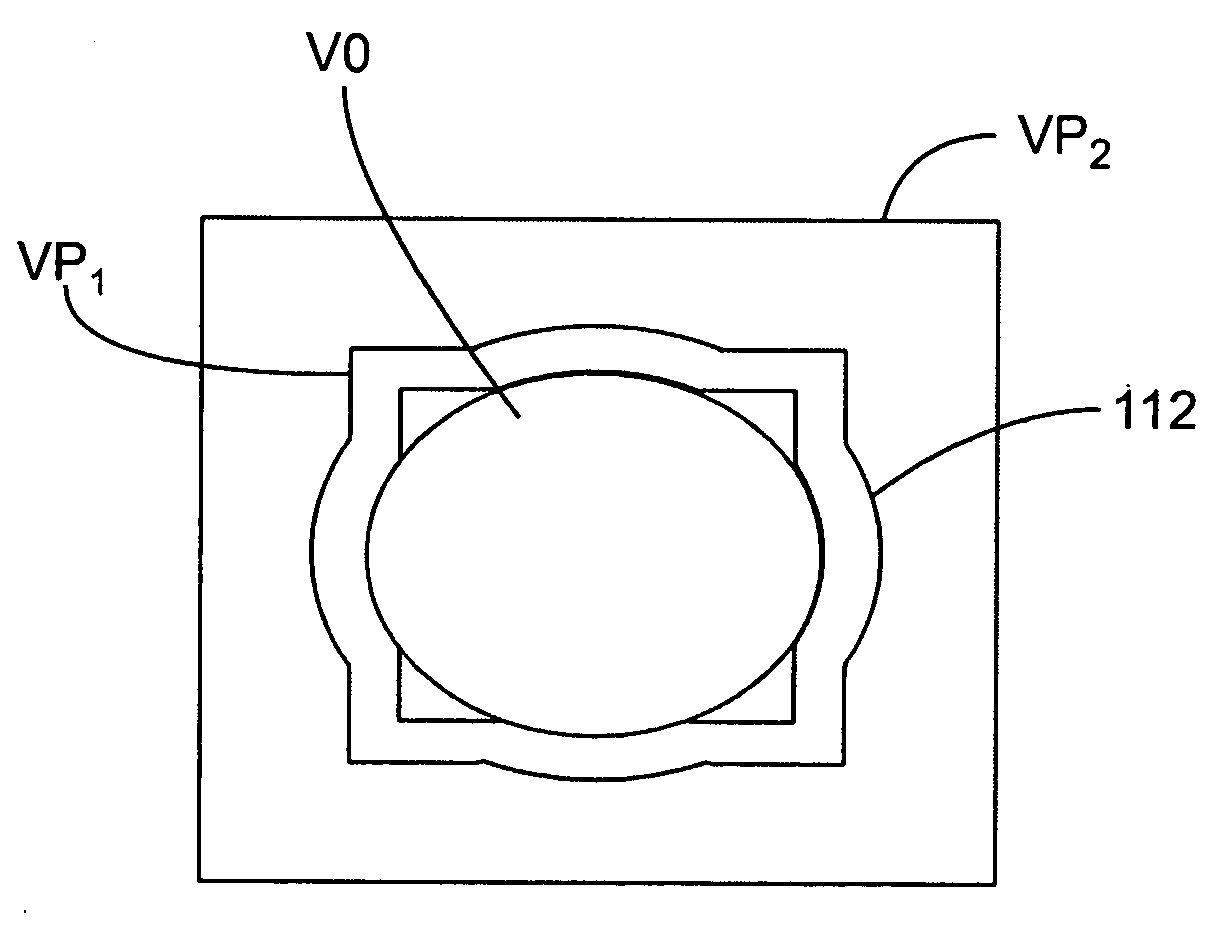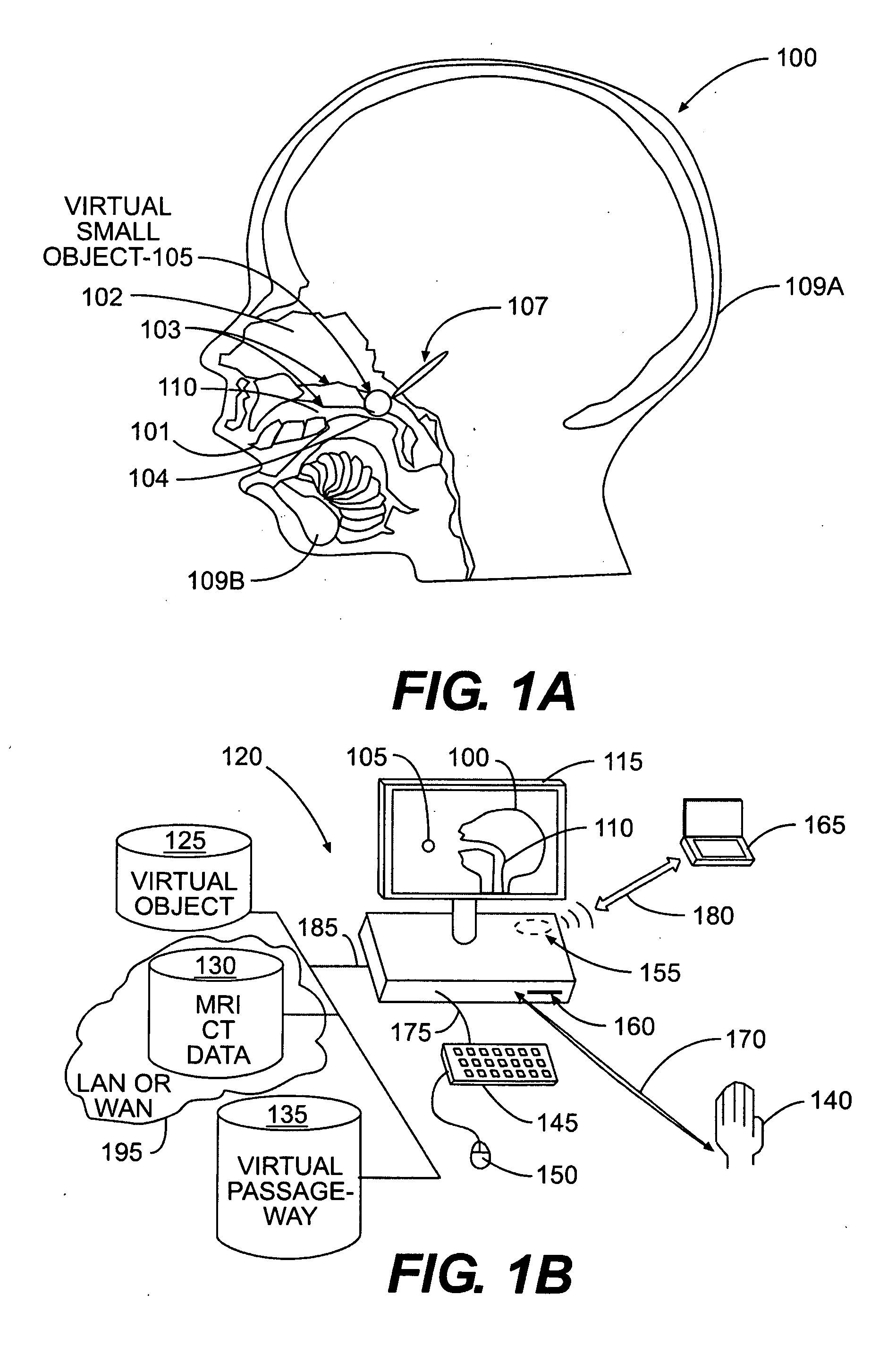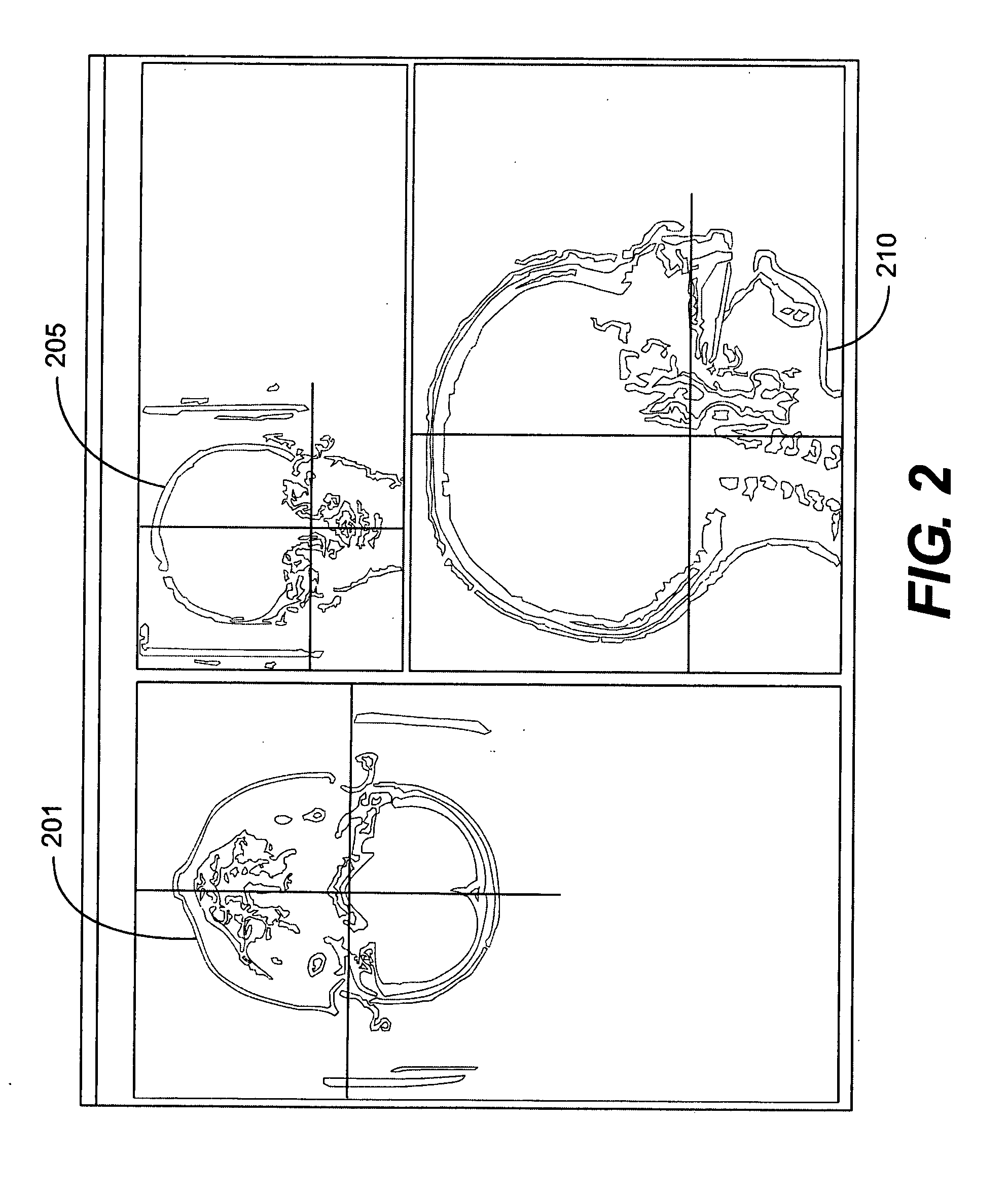Haptic response system and method of use
a haptic response and haptic technology, applied in the field of haptic response systems and methods, can solve the problems of inaccurate modeling techniques, inaccurate haptic systems, and inability to accurately model the forces experienced during actual surgery or performance, and achieve accurate, realistic tactile force feedback
- Summary
- Abstract
- Description
- Claims
- Application Information
AI Technical Summary
Benefits of technology
Problems solved by technology
Method used
Image
Examples
Embodiment Construction
[0030] In one embodiment, the invention provides a virtual haptic response system and method that enables a user to visually and tactilely assess a choking, ingestion, blocking, insertion, aspiration, or other hazard associated with an insertion of a manufactured, or yet to be manufactured, object into a human passageway. Illustratively, the object may be a toy or other article intended for use by children, as well as other consumer or food products intended for use by any age group. The object may be modeled by a virtual object that includes the dimensions and material properties of the real object.
[0031] Hazards associated with the object may be assessed by interacting the virtual object with an anatomically correct, virtual passageway that models a real human passageway, such as, but not limited to, a nasal pharynx, an oral cavity, an oral pharynx, a trachea, a hypo-pharynx, and an esophagus. The virtual passageway may be dimensionally sized and imbued with specific material pro...
PUM
 Login to View More
Login to View More Abstract
Description
Claims
Application Information
 Login to View More
Login to View More - R&D
- Intellectual Property
- Life Sciences
- Materials
- Tech Scout
- Unparalleled Data Quality
- Higher Quality Content
- 60% Fewer Hallucinations
Browse by: Latest US Patents, China's latest patents, Technical Efficacy Thesaurus, Application Domain, Technology Topic, Popular Technical Reports.
© 2025 PatSnap. All rights reserved.Legal|Privacy policy|Modern Slavery Act Transparency Statement|Sitemap|About US| Contact US: help@patsnap.com



